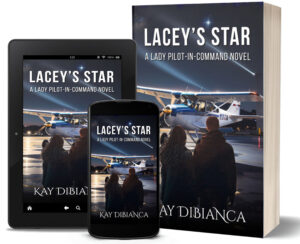Character Based Transitions
Terry Odell
 As this is my last post here before TKZ takes its annual holiday break, I’d like to wish everyone my best wishes for a happy holiday season, no matter what you celebrate. And if you don’t celebrate any holidays in December, I wish you a happy month.
As this is my last post here before TKZ takes its annual holiday break, I’d like to wish everyone my best wishes for a happy holiday season, no matter what you celebrate. And if you don’t celebrate any holidays in December, I wish you a happy month.
Travel played a big part in my 2024, with two big international trips—one to New Zealand, and another to the Faroe Islands. I’m currently working on a book set against some of the places we saw in the Faroes. I’ve mentioned it before. Writing a book set in a place you’ve been turns in into a research trip. Read tax write off.
My Danube Christmas Market book, Double Intrigue, is a stand alone, but when it came to figuring out the bones of a story focused in the Faroes, it seemed more suited to another Blackthorne, Inc. book. Keeping within that series genre, it would have to be a romantic suspense. And, like in Cruising Undercover, it wasn’t going to be a covert ops book, but rather the protagonist would be working in Blackthorne’s Security and Investigations department. I’m too burned out on war and violence to write about it. And, because “romantic suspense” would be in the subtitle, I was going to need a second protagonist in order to meet the expectations of romance readers.
Have I ever mentioned the challenges of writing a romantic suspense? It’s really three books in one. There’s the ‘suspense/mystery’ story, as well as the romance story, which requires character arcs for both the hero and heroine. (Or hero/hero or heroine/heroine, but I haven’t written one of those yet.)
 My normal style is to alternate chapters between my POV characters. Which brings me to transitions.
My normal style is to alternate chapters between my POV characters. Which brings me to transitions.
JSB recently wrote that he used a jump cut and Drop Caps to alert the reader to a new scene. I’m old school and use chapters. I used to include both POV scenes in my chapters, but my editor told me that since readers want short chapters these days, to make each POV scene its own chapter.
I recently read a book by a Big Name Author who told the story from the points of view of two protagonists. Not a romance by any stretch. The two characters were working toward a common goal, often going their separate ways. It was a great book, don’t get me wrong, but the author never made it clear (to me, anyway) at the start of each chapter, who the POV character was. It created ‘out of the story’ moments. Now, if I’d been a more astute reader, I might have realized that one protagonist was written in 1st person, and the other was written in third, but that took a lot of time to figure out.
My approach when I’m writing is to make darn sure that every chapter starts out with showing who/where/when/and a POV “flag” to ground my readers. Troubling as it may be to authors, readers might have put the book down, gone to work, come home to a family crisis, or any other interruption and they might not get back to the book for several days. Or, they’re like me, and they just plain forget.
In the current wip, not only do I have 2 POV characters, but they don’t get together on the page until Chapter 14. Until then, they’re in different countries, and their timelines aren’t the same. Not because of time zone issues. One’s several weeks ahead of the other.
I ended up writing each character’s chapters separately, and then weaving them together. Sort of like JSB’s Shadow Stories, because I needed to know what each of them was doing in their own timeline even though they hadn’t met yet, but these stories were on the page, not in my notes. That wasn’t my normal process, and created its own challenges when it came time to weave them together.
If you’re alternating POV characters, and they’re not together, the last sentence of the previous paragraph might not lead into the first one of the next.
Every chapter needs to ground the reader. Who’s the POV character? Where are they? When is it? What are they doing?
I prefer to get this information right up front. Definitely within the first few paragraphs.
The “who” I want in the first paragraph if at all possible.
Things to consider:
- Use the character’s name.
- Show them doing something.
- Show a thought or something only they would know—the POV “flag”.
The vibration of Logan Bolt’s cell phone gave him a welcome excuse for a break from his run.
We have his name: Logan Bolt. He’s running. He’s glad for the interruption, and only he knows this. (flag”)
Or this:
Maddie busied herself with kitchen tasks, trying not to think that Logan might not have been completely honest.
We know the POV character is Maddie. She’s working in the kitchen. Only she will know what she’s thinking. (”flag”)
Doesn’t take much, but you’re grounding your reader.
I did a post a while back dedicated solely to different kinds of transitions, so if you want more, you can find it here.
How do you handle transitions? Tips and Peeves welcome.
And again, Happy Holidays. See you in January.
New! Find me at Substack with Writings and Wanderings
Double Intrigue
When your dream assignment turns into more than you bargained for
 Shalah Kennedy has dreams of becoming a senior travel advisor—one who actually gets to travel. Her big break comes when the agency’s “Golden Girl” is hospitalized and Shalah is sent on a Danube River cruise in her place. She’s the only advisor in the agency with a knowledge of photography, and she’s determined to get stunning images for the agency’s website.
Shalah Kennedy has dreams of becoming a senior travel advisor—one who actually gets to travel. Her big break comes when the agency’s “Golden Girl” is hospitalized and Shalah is sent on a Danube River cruise in her place. She’s the only advisor in the agency with a knowledge of photography, and she’s determined to get stunning images for the agency’s website.
Aleksy Jakes wants out. He’s been working for an unscrupulous taskmaster in Prague, and he’s had enough. When he spots one of his coworkers in a Prague hotel restaurant, he’s shocked to discover she’s not who he thought she was.
As Shalah and Aleksy cruise along the Danube, the simple excursion soon becomes an adventure neither of them imagined.
 Like bang for your buck? I have a new Mapleton Bundle. Books 4, 5, and 6 for one low price.
Like bang for your buck? I have a new Mapleton Bundle. Books 4, 5, and 6 for one low price.
 Terry Odell is an award-winning author of Mystery and Romantic Suspense, although she prefers to think of them all as “Mysteries with Relationships.”
Terry Odell is an award-winning author of Mystery and Romantic Suspense, although she prefers to think of them all as “Mysteries with Relationships.”






 When I finished writing
When I finished writing 



